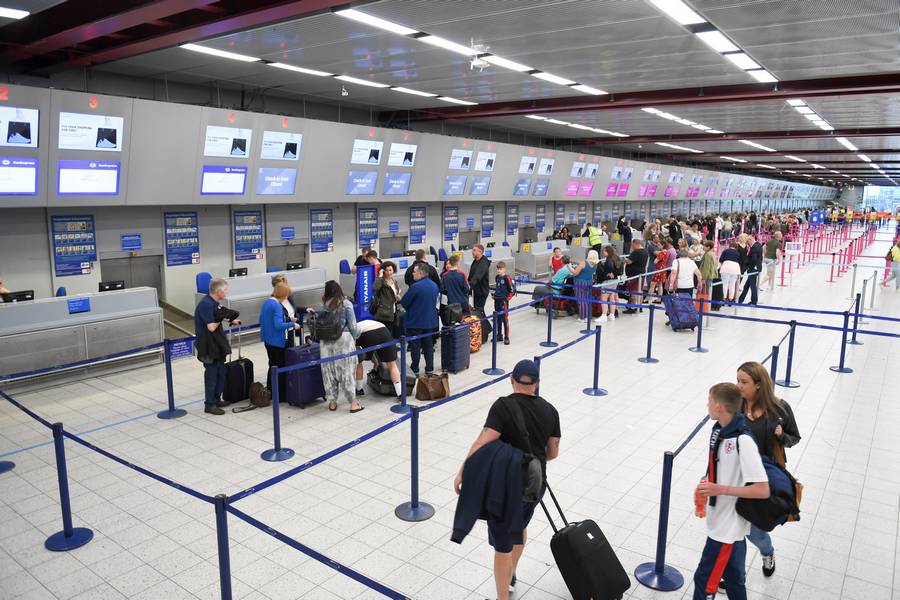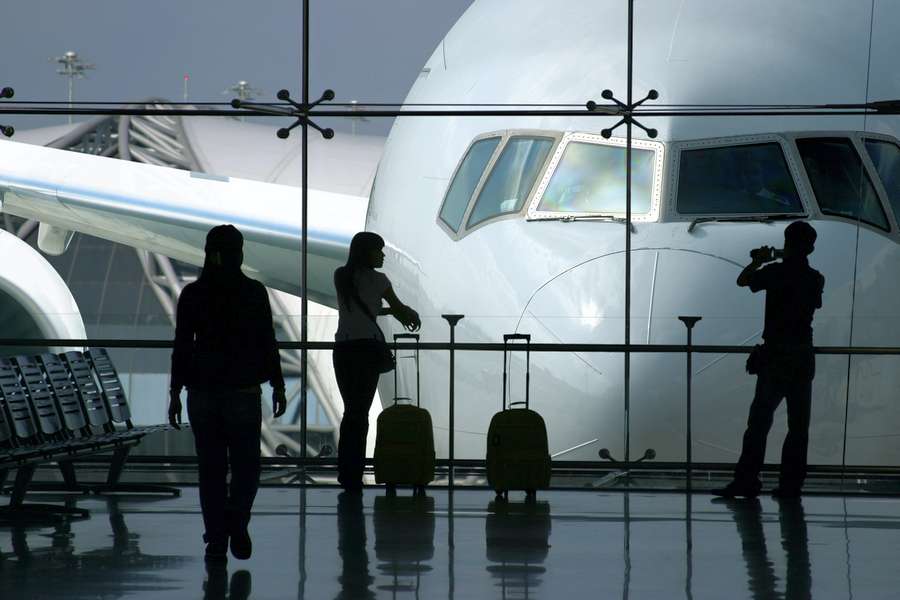What to do when pre-flight fear strikes while you’re waiting to board your plane: here are 5 strategies to decrease your flight anxiety when at the airport.
About the Author
Suzanne Duke is a doctoral-level developmental psychologist who began her career working with young children and then with university students, particularly helping first-year students adjust to college life and living away from home. She is also a social worker and particularly enjoys treating anxiety disorders, such as fear of flying!
Introduction
Imagine the following scenario: you dislike flying so much that you would rather have a complex dental procedure without Novocain. Everything about the flying process makes you anxious, starting from the day you bravely purchase your ticket and then every day before the trip, imagining your plane nose-diving into the ground just after takeoff. However, despite these fears (and I laud you that you made it to the airport – please do not forget that is a huge achievement!!!), you are now at the airport, have made it through security, and are now anxiously sitting at the gate waiting to board the plane.

You are experiencing what is known as anticipatory anxiety, or the disproportionate amount of anxiety associated with a future event or situation, given how dangerous the event or situation actually is (1). In terms of fear of flying, you may be deeply afraid before your flight that it is going to crash, but statistics assure us that flying is so extraordinarily safe that being anxious at all is not commensurate with its actual risk. Anticipatory anxiety can be quite crippling, and it is not at all infrequent for nervous flyers to want to get up out of the gate waiting area and ditch their trip altogether. At its heart, anticipatory anxiety is grounded in fear of a loss of control; that is, it requires giving up control of the future and accepting the “what ifs” that ensue (2). Ultimately, anytime you are anxious about a situation but know you cannot control the outcome, anticipatory anxiety is at work.
However, just because you cannot control the outcome and are thus experiencing symptoms of anticipatory anxiety does not mean that you have no control over your anxiety in the moment. In fact, this is a time for you to take back some of the anxiety’s power over you. By actively engaging in any number of anxiety-decreasing behaviors, you have the opportunity to challenge your automatic negative thoughts with success – and a lowered heart rate. Below, I suggest 5 activities you could try engaging in when you are at your gate, the fear starts to envelop you, and you need to reassert rational control over your thinking. Each of these tips is tailored to some extent toward how your fear of flying is best reduced and is hopefully worth a go.

1.) Counting Successful Takeoffs
If you are a data-driven person whose fear of flying is reduced by information about how safe the aviation industry actually is, one possible anxiety-reducing behavior is to watch all the “successful” takeoffs outside the windows that often overlook the tarmac at various gates. In this situation, “successful” is defined as a plane which takes off into the sky without incident. Because of factors such as wake turbulence, how busy the airport is, and speed of movement of ground traffic, it is difficult to determine with certainty the rate at which planes take off, but for our purposes, let’s estimate that roughly one plane takes off every 1-and-a-half minutes. If you commit to watching just 5 minutes worth of takeoffs, you will see that approximately 3 planes safely take off in that time period, and 40 planes takeoff without incident per hour. Thus, instead of someone simply telling you how safe airline travel is, you can see for yourself how uneventful these events actually are.
There are two other reasons that counting takeoffs can be effective in decreasing anxiety in some nervous flyers. First, counting takeoffs requires people to focus heavily on their sense of sight. Focusing strongly on one sense at a time – in this case, sight – is a way to move from the cognitive realm, which may be filled with unbidden disturbing thoughts and images about worst case scenarios, and consciously shift attention to the relevant sense(s). This idea behind psychological grounding has long been used in work with people with histories of trauma and is now heavily used in treating anxiety and types of specific phobias (3). In this situation, as people bring their awareness to their sight, anxiety levels drop as people work to empty their minds and simply look at the planes.

The second and related reason counting takeoffs could help reduce anxiety is that the process itself of counting the takeoffs can take up the mental space that was previously filled by perseverative thoughts of disaster. Counting can have a deeply ritualistic feel, and the act of performing a simple, ritualistic task can be deeply calming. In fact, if you are someone who finds counting quite helpful because of the concentration it takes, a twist on the counting takeoffs strategy is to count the number of seconds between takeoffs. In both cases, counting provides a simple, effective psychological technique that requires nothing but a window and the ability to see a runway.
2.) Get out of the gate area and browse the airport gift shops
Distract yourself by doing some airport window shopping or even treating yourself to something you would not normally buy when not travelling. You might buy the newest bestseller from a favorite writer, or you might buy the newest edition of a magazine or two. (For example, every time I travel, I shamelessly buy US Weekly and Rolling Stone, and by the end of the flight, I am totally caught up on all the most recent pop culture news. Not to worry, the Economist will still be there when I land.) Or, you might focus on choosing just the right gift or souvenir for someone in your life as a way to take your mind off your flight anxiety, even if just for a little while.

3.) Move from your gate to a much more open and expansive part of the terminal
If a significant piece of your anxiety around flying is related to claustrophobia, or the fear of being in an enclosed space, you might try moving away from the gate area to a part of the terminal with higher ceilings and skylights. These sorts of open atrium-like spaces are often part of the design of newer airports, and they can make being in the airport feel much less restricting. Particularly expansive food and shopping halls exist at airports in most major international airports or many airports that have been recently renovated, such as San Francisco, Denver, and Reagan National airports.
4.) Move around to keep your blood moving and your endorphins flowing
There is a well-known link between movement and increased mood. In fact, just 20 minutes of brisk walking can release both endorphins and neurotransmitters such as serotonin and dopamine, which are known to increase mood and decrease anxiety. Many gate areas are at the far end of an airport terminal, with mechanical people movers providing travelers assistance by carrying them along with their luggage. But, given how effective simple exercise can be in decreasing anxiety, one basic but efficient way to calm those racing negative thoughts is to ditch the people movers and walk up and down the terminal as fast as you can (recognizing that you may have carry-on luggage to account for slowed pace, unless you have a traveling companion to watch it for you). You might be shocked to find how much calmer you feel after just 20 minutes of cardiovascular exercise. Alternatively, if you want to stay in the gate area, there are plenty of exercises you can do while sitting in your chair (4). With the proliferation of these “chair exercises”, you can increase your heart rate as well as help strengthen your lower legs and relax those easily knotted muscles. The overall calm that occurs after exercising is another great way to manage your anxiety when your options are limited.

5.) Don’t be afraid to ask for support
It is absolutely acceptable to ask for support if you cannot seem to get control of your flight anxiety. If you have a traveling partner who understands and is empathic to your fear of flying, s/he might be a good person to help you reign in your most distressing thoughts and bring your awareness back to the present. Your traveling partner might be able to gently remind you that although you are afraid, you are about to engage in an activity that is extremely safe and that is done every day all over the world without incident.
If you are traveling with a partner with whom you do not feel comfortable turning to for support, or you are traveling alone, this might be a good time to reach out to a friend or family member who understands your fear. With the advent of cell phones, it is easier than ever to get in touch with supportive allies, and choosing to reach out for kind words and encouragement when afraid is a thoughtful, self-aware decision. Suffering in silence will only give the catastrophic thoughts around your upcoming flight more power, and talking it out in rational terms with someone supportive will help strip those thoughts of their power.

Final Thoughts
Ultimately, whether you utilize any of the five strategies discussed above or try another or some other calming method that feels more comfortable, you have it in you to disempower anticipatory anxiety and join the millions who enjoy flying every single day.
Questions? Thoughts on these strategies or ideas of your own that you would like to share with the Mentour Pilot community? Leave a comment below, and I will do my best to reply to as many as possible.
References
(1) Leonard, Jane. (20 July, 2021). What to know about anticipatory anxiety. Medical News Today. https://www.medicalnewstoday.com/articles/anticipatory-anxiety
(2) Grupe DW, Nitschke JB. Uncertainty and anticipation in anxiety: an integrated neurobiological and psychological perspective. Nat Rev Neurosci. 2013 Jul;14(7):488-501. doi: 10.1038/nrn3524. PMID: 23783199; PMCID: PMC4276319.
(3) Raypole, C. (13 June, 2022). 30 Grounding techniques to quiet distressing thoughts. Healthline. https://www.healthline.com/health/grounding-techniques



